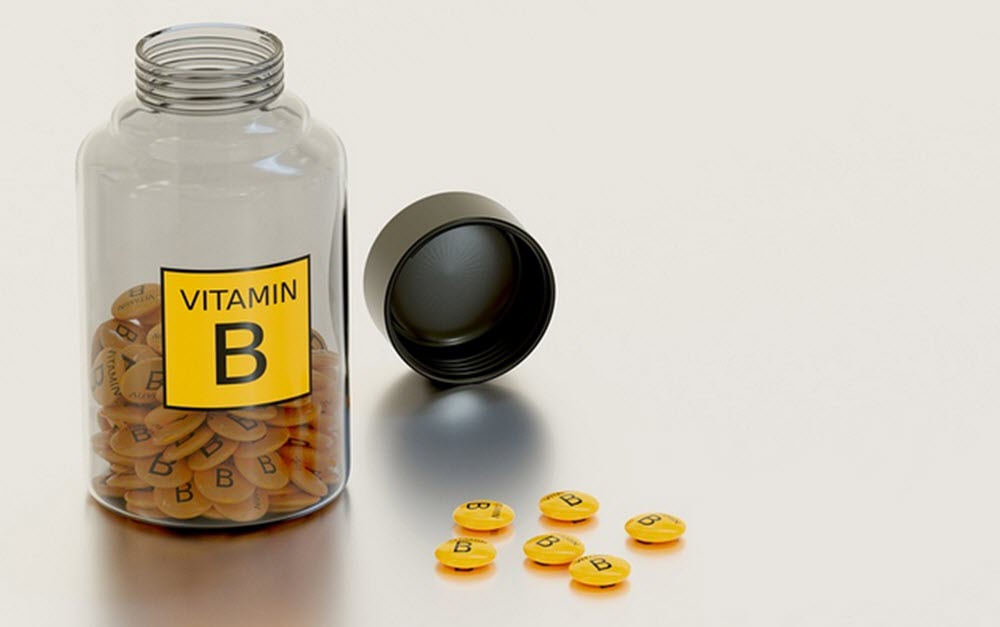
The vitamin B6 is important for several different tasks in the human body. Here are some examples:
- We need B6 to maintain proper nerve function.
- We need B6 to keep our blood sugar levels within the proper range.
- We need B6 to produce hemoglobin. Hemoglobin transports oxygen within the red blood cells, and vitamin B6 deficiency can therefore result in a type of anaemia.
- We need B6 to produce antibodies. Without enough vitamin B6, the human immune system will not function properly.
- We need B6 to break down proteins. If your diet is especially rich in proteins, your body will need more B6 than someone who is eating less protein.
B6 deficiency is uncommon in humans, but can occur. Certain health conditions can increase the risk of developing a B6 deficiency, such as kidney failure, liver disease and alcoholism.
Symptoms of B6 deficiency
B6 deficiency can lead to symptoms from different parts of the body, and systemic symptoms, since B6 is needed for so many different things.
Here are a few examples of symptoms of B6 deficiency:
- Mouth and tongue sores
- Peripheral neuropathy
- Depression
- Irritability
- Confusion
Water-soluble
Vitamin B6 is a water-soluble vitamin. The body can not store any significant amount of B6, so it is important for us to continuously get B6 from our food. The human body does maintain a small pool of water-soluble vitamins, including B6, but not at all in the same quantities as it does with fat-soluble vitamins (such as vitamin A) and certain minerals (such as iron).
Some research indicate that even though the body can not store much vitamin B6, ingesting huge amounts each day over a long period of time (such as months or years) can be unhealthy. Therefore, the European Food Safety Authority (EFSA) recommends staying below 25 milligrams per day for adults. To put this into perspective, the recommended daily intake for adult males is 1,6 milligrams per day, so there is a big difference between the recommended level and the upper limit.
Getting more than 25 milligrams of B6 from your diet in a single day is not likely if you stick to a normal diet. Example: Beef liver is a great source of B6, but 100 grams of beef liver only contains 0,6 milligrams of B6. If you ate a hole kilogram of beef liver, that would still only be 6 milligrams of B6. Somewhere around 4 kilograms of beef liver, you will approach the upper limit.
Food with vitamin B6
Here are a few examples of foods that are rich in vitamin B6.
- Pistachio nuts (circa 1.7 mg of B6 in 100 grams)
- Dried sunflower seed kernels (circa 1.3 mg of B6 in 100 grams)
- Dried safflower seed kernels (circa 1.2 mg of B6 in 100 grams)
- Lean chicken breast (circa 0.9mg of B6 in 100 grams)
- Salmon fillet (circa 0.9mg of B6 in 100 grams)
- Beef liver (circa 0.6 mg of B6 in 100 grams)
- Mamey sapote fruit (circa 0.7 mg of B6 in 100 grams)
Some processed foods are not naturally rich in B6, but contains a lot of B6 because they are fortified. There are for instance a lot of breakfast cereal products available that are fortified with B6.
Recommended daily intake
Recommended daily intake of vitamin B6:
- 0.3 mg for infants aged 7-11 months
- 0.6 mg to 1.4 mg for children aged 1-14
- 1.6 mg for girls aged 15-17
- 1.7 mg for boys aged 15-17
- 1.6 mg for women
- 1.7 mg for men
- 1.7 mg when lactating
- 1.8 mg when pregnant
Source: The European Food Safety Agency (EFSA)

